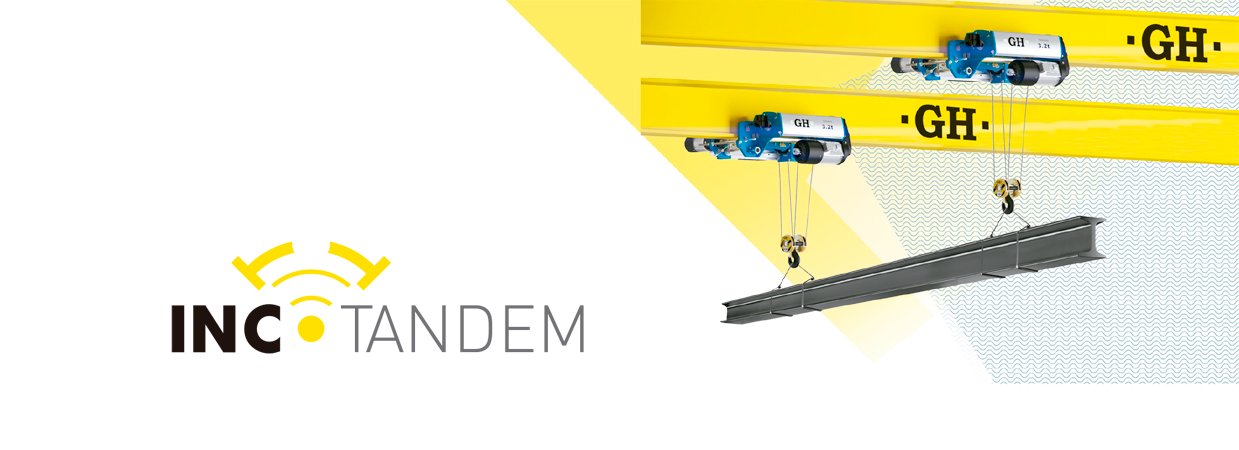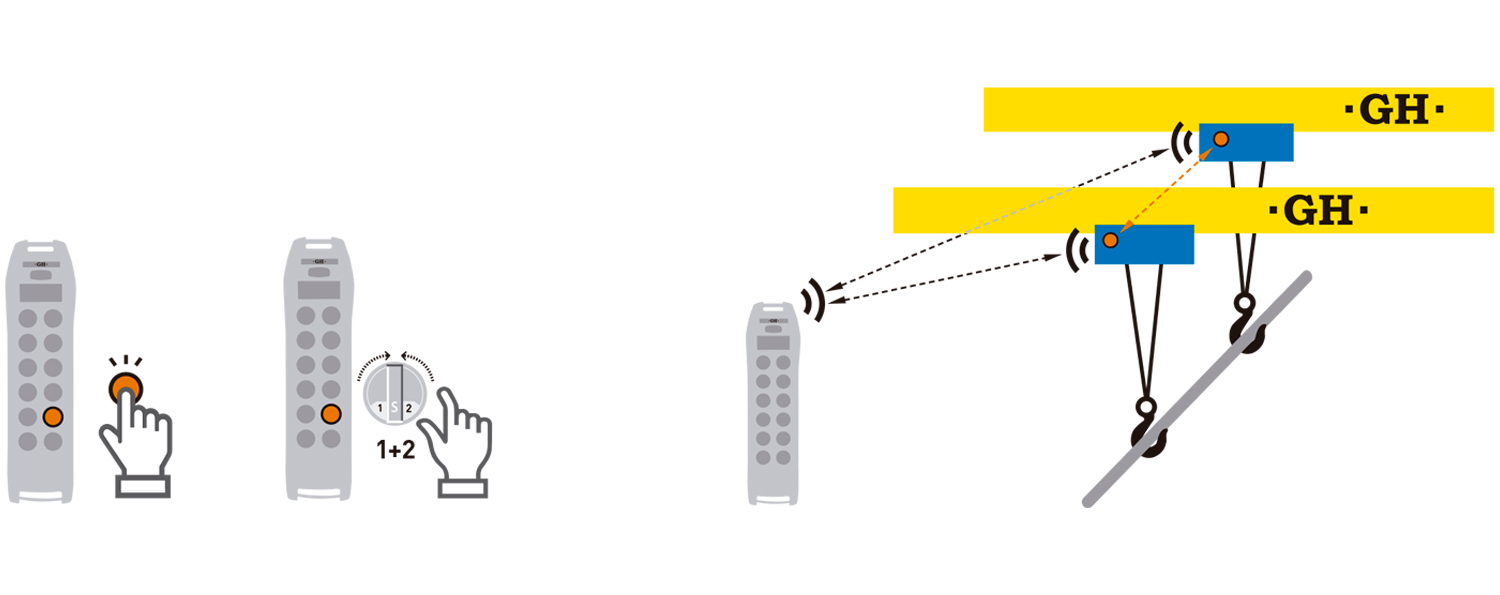Incotandem
Synchronisation of two cranes working in tandem

For situations where the same load is handled using 2 cranes, and we want effective synchronisation of their movements.
GH SOLUTION: INTERCONNECTED + TANDEM = INCOTANDEM
- Tandem mode: This allows control of the movements of 2 cranes from 1 radio control.
- There are 2 radio transmitters. Each transmitter can control a crane individually. And when the tandem mode is activated, one of the transmitters is capable of controlling the movements of the 2 cranes (it acts as the master).
- Each crane is equipped with 1 receiver with two functions: communication with the transmitter operated by the user and communication with the receiver installed on the other crane.
- If any of the movements (lifting, trolley movement, bridge movement) changes between slow speed/fast speed/stop, a signal is sent to the other crane to carry out the same change.
- The transmitters can be push-button type (standard) or console (optional).
ADVANTAGES
- Easy to switch between tandem mode and individual mode. In the transmitter that can function as the master, there is a selector to choose individual mode or tandem mode.
- Suitable for cranes with 1 or 2 trolleys each. Also for cranes with 1 trolley with 2 lifting systems.
- Occupies fewer radio frequencies (only 3 frequencies per pair of cranes).
- The number of pieces of equipment to install is reduced. The system does not need an additional transmitter-receiver set (fixed/fixed system).
- Reduction of components and wiring simplifies installation, commissioning and maintenance.
HOW IT WORKS
- Release the crane that will work as a slave from its transmitter.
- Activate tandem mode on the master transmitter.
- Communication will be established automatically between the master transmitter and each of the receivers installed in the cranes.
- Two-way communication between the crane receivers will be established automatically.
- If any of the movements (lifting, trolley movement, bridge movement) changes between slow speed/ fast speed/stop in one crane, a signal is sent to the other crane to carry out the same change.

Technical details
· Complies with standard EN 15011:2011+A1:2014. Maximum bridge travel speed 60 m/minute. Maximum lifting speed 20 m/minute.
· Frequency Band: 433-II between transmitter and receiver. EU-870 between receivers.
· In each crane, the auxiliary contacts of the operating contactors are wired to the receiver (up to a maximum of 16 signals).
· Options such as the tare button, display, console format, etc. involve a higher price and longer delivery time.
· For pairs of cranes with 2 trolleys each, it is possible to operate trolleys individually using the selector C1, C2, C1+C2. With standard radio remote,
it is not possible to have different movements for each trolley at same time, they have to be synchronized.
· Can be used both for cranes with motors controlled by variable frequency drives and dual-wound motors.